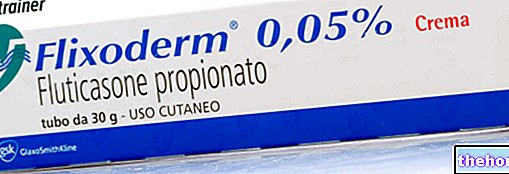Active ingredients: Betamethasone
Bettamousse 1 mg / g (0.1%) skin foam
Why is Bettamousse used? What is it for?
Bettamousse contains the active ingredient betamethasone as valerate.
Bettamousse belongs to a group of medicines called corticosteroids (abbreviated to "steroids").
Bettamousse is used to treat scalp skin disorders, such as psoriasis (raised, reddish patches of skin covered with silvery scales), which can cause skin itching, tightness or irritation. Bettamousse works by reducing inflammation (redness, itching and pain). It is important to use this medicine to prevent skin damage and infection from developing.
Contraindications When Bettamousse should not be used
Do not use Bettamousse
- If you are allergic to betamethasone valerate or any of the other ingredients of this medicine (listed in section 6). Some of these components (stearyl alcohol, cetyl alcohol and propylene glycol) can cause local skin reactions (such as contact dermatitis).
- If you have any type of scalp infection, unless this is already being treated.
- On a child under the age of 6.
If any of the above apply to you, consult your doctor or pharmacist.
Precautions for use What you need to know before taking Bettamousse
Talk to your doctor or pharmacist before using Bettamousse if:
- suffer from any type of skin infection.
- has open wounds on the scalp.
- you are taking other medicines, including those obtained without a prescription.
Children and adolescents
Do not use this medicine in children under 6 years of age.
Interactions Which drugs or foods can modify the effect of Bettamousse
Tell your doctor or pharmacist if you are using, have recently used or might use any other medicines.
Warnings It is important to know that:
Pregnancy and breastfeeding
If you are pregnant or breast-feeding, think you may be pregnant or are planning to have a baby, ask your doctor or pharmacist for advice before using this medicine.
Driving and using machines
There are no known effects on driving or using machines.
Betttamousse contains cetyl alcohol and stearyl alcohol which can cause local skin reactions (e.g. contact dermatitis).
Bettamousse contains propylene glycol which can cause skin irritation.
Dose, Method and Time of Administration How to use Bettamousse: Posology
Always use this medicine exactly as your doctor or pharmacist has told you. The dose will be clearly indicated on the doctor's prescription. If in doubt, consult your doctor or pharmacist.
To remember:
Use the lowest possible dosage of Bettamousse for the shortest possible time. • Avoid contact with eyes. If Bettamousse comes into contact with your eyes, rinse them well with cold water. If your eyes continue to burn, contact your doctor. • Avoid contact with the inside of the nose and mouth. • Avoid contact with open wounds.
The recommended dose is:
Adults
- An amount of foam no larger than a golf ball.
- Massage the affected areas of the scalp twice a day (morning and evening).
- If after 7 days there is no improvement, stop using Bettamousse and consult your doctor again.
Children over 6 years old
- The dose depends on the size.
- The usual dose for children is lower than for adults. For example, for a child half the size of an adult, use no more than "half a golf ball" of foam.
- Massage the affected area of the scalp twice a day (morning and evening).
- Do not use Bettamousse for more than 5-7 days in children. If your symptoms have not improved, see your doctor again
Do not use in children under 6 years old.
When the symptoms improve
For adults and children: As soon as improvement in symptoms is observed, Bettamousse can only be applied once a day. If the condition continues to improve, it may be appropriate to apply Bettamousse once every two to three days, to prevent the symptoms from returning.
Infections
If you have a skin infection, your doctor will prescribe another medicine to treat it. In the meantime, your doctor may also instruct you to stop using Bettamousse. If you are not sure how much foam to use, ask your doctor or pharmacist. Instructions for Use:
- Remove the cap
- Turn the container upside down and spray the required amount of foam onto a clean saucer or other similar surface. The foam melts when it comes into contact with the skin, so it should not be sprayed directly on the hand.
- Massage the foam into the affected areas of the scalp, but not into the hair. Let your hair dry naturally.
- Wash your hands immediately after using the foam.
- Do not wash your hair immediately after applying the foam, leave it to act overnight or all day.
- You can wash and dry your hair right before applying the foam. This product is flammable. Do not use Bettamousse near a flame or a direct source of heat. Do not smoke while in use or while holding the container.
Medical checks
If you use the medicine for a long time, your doctor may check you regularly to check that the medicine is working properly and that the dose you are using is suitable for you.
If you forget to use Bettamousse
Do not use a double dose to make up for a forgotten dose. Simply take the next dose as prescribed.
If you stop using Bettamousse
Do not stop taking Bettamousse without first checking with your doctor. The disorder may recur after you stop using Bettamousse. If this happens, consult your doctor as soon as possible.
If you have any further questions on the use of this medicine, ask your doctor or pharmacist.
Overdose What to do if you have taken too much Bettamousse
Wash your scalp right away and start over. You are unlikely to suffer from side effects from using too much medicine on one occasion. However, if you are concerned, contact the nearest emergency room or doctor.
Prolonged use of an excessive amount of Bettamousse can cause a number of unwanted effects.
Side Effects What are the side effects of Bettamousse
Like all medicines, Bettamousse can cause side effects, although not everybody gets them.
If any of the following symptoms occur, stop using Bettamousse and seek medical help immediately:
- Headache
- Burning
- Itching
Uncommon: may affect up to 1 in 100 people
- Skin infection
- Thinning of the skin
- Spots on the skin (in the form of dark patches or lines)
- Reddish rash on the face
- Ease of bruising
Rare: may affect up to 1 in 1000 people
- Hypersensitivity reactions such as itching, redness and burning
- Lighter or darker patches of skin
- Hair loss
- Infection of the hair follicles
- Red spots on the skin
Not known: frequency cannot be estimated from the available data
- Worsening of the condition of the scalp, with the formation of pus-filled ulcers
- Acne
- Purple spots on the skin
- Rash around the mouth
Effects resulting from the prolonged use of a high dose of Bettamousse:
- Excessive hair growth
- Changes in skin color
- Menstrual irregularities in women
- Water retention (bloated feeling)
- Mood changes or sleep disturbances
- Blurred vision or eye pain
- Upset stomach or stomach discomfort
- Acne
- Headache
These effects are more likely to occur in children, and in cases where, after the application of Bettamousse, dressings that cover the scalp are used.
The frequency of these effects resulting from prolonged use is unknown.
Reporting of side effects
If you get any side effects, talk to your doctor or pharmacist. This includes any possible side effects not listed in this leaflet. You can also report side effects directly via the national reporting system at www.agenziafarmaco.it/it/responsabili. By reporting side effects you can help provide more information on the safety of this medicine.
Expiry and Retention
Keep this medicine out of the sight and reach of children.
Do not use Bettamousse after the expiry date which is stated on the label. The expiry date refers to the last day of that month.
Do not store above 25 ° C. Do not refrigerate. Protect from sunlight and all other direct heat sources, as this product is extremely flammable. Do not pierce or burn the container, even when it is empty.
Do not throw any medicines via wastewater or household waste. Ask your pharmacist how to throw away medicines you no longer use. This will help protect the environment.
Other information
What Bettamousse contains
- The active ingredient is betamethasone (in the form of valerate) 1 mg / g (0.1%)
- The other ingredients are cetyl alcohol, stearyl alcohol, polysorbate 60, ethanol, purified water, propylene glycol, anhydrous citric acid, potassium citrate, and butane / propane.
Description of the appearance of Bettamousse and contents of the package
Bettamousse is a white foamy foam for skin use.
Bettamousse is available in an aluminum container equipped with a valve and a transparent cap. It is available in two formats: 50g or 100g.
Source Package Leaflet: AIFA (Italian Medicines Agency). Content published in January 2016. The information present may not be up-to-date.
To have access to the most up-to-date version, it is advisable to access the AIFA (Italian Medicines Agency) website. Disclaimer and useful information.
01.0 NAME OF THE MEDICINAL PRODUCT
BETTAMOUSSE 1 MG / G (0.1%) SKIN FOAM
02.0 QUALITATIVE AND QUANTITATIVE COMPOSITION
1 gram of foam contains 1 mg of betamethasone (0.1%) as valerate.
Excipients with known effects: cetyl alcohol 1.10% w / w, stearyl alcohol 0.50% w / w and propylene glycol 2.00% w / w.
For the full list of excipients, see section 6.1.
03.0 PHARMACEUTICAL FORM
Skin foam.
White foam.
04.0 CLINICAL INFORMATION
04.1 Therapeutic indications
Bettamousse is indicated for the treatment of steroid sensitive scalp dermatoses, such as psoriasis.
04.2 Posology and method of administration
Dosage
Adults, the elderly and children (over six years of age): an amount of foam no larger than a golf ball (equal to an amount of approximately 3.5 mg of betamethasone), or proportionately less for children, twice per day (morning and evening) until the condition improves. If no improvement is noted after 7 days, treatment should be discontinued. Once the improvement has taken place, reduce the applications to once a day and, subsequently, it is possible to maintain this improvement even with less frequent applications.
Pediatric population
In children over 6 years of age, the product should generally not be used for periods longer than 5-7 days.
Method of administration
Massage into the affected areas of the scalp. Patients should be advised to apply the product in moderation.
04.3 Contraindications
Hypersensitivity to the active substance or to any of the excipients listed in section 6.1
Bacterial, fungal, parasitic or viral infections of the scalp unless concomitant treatment is started.
Dermatosis in children under six years of age.
04.4 Special warnings and appropriate precautions for use
Avoid contact with eyes, open wounds and mucous membranes. Do not use near an open flame.
Apply as little foam as possible to keep the disease under control for the shortest time possible. This reduces the potential for long-term side effects. This is particularly the case in children, as adrenal suppression can occur even without using an occlusive dressing.
As with other topical corticosteroids, in the case of prolonged treatments, a medical check-up is recommended at least once a month and it may be advisable to monitor for signs of systemic activity.
The use of topical corticosteoroids in the treatment of psoriasis requires careful supervision. Glucocorticoids can mask, activate, or worsen a "skin infection. Development of a" secondary infection requires appropriate antimicrobial treatment and topical corticosteroid therapy may need to be discontinued. Occlusive treatment should be avoided if there are signs of secondary infection. There is a risk of developing generalized pustular psoriasis or local or systemic toxicity due to decreased skin barrier function.
Tolerance may develop and relapse may occur as a rebound effect upon discontinuation of treatment.
Bettamousse contains cetyl alcohol and stearyl alcohol, which can cause local skin reactions (e.g. contact dermatitis).
Bettamousse contains propylene glycol, which can cause skin irritation.
04.5 Interactions with other medicinal products and other forms of interaction
Not relevant with topical use.
04.6 Pregnancy and breastfeeding
Pregnancy
There are no or limited data from the use of betamethasone valerate in pregnant women. Bettamousse should only be used during pregnancy if the potential benefit outweighs the risk.
Topical applications of corticosteroids to pregnant animals can cause fetal developmental abnormalities, such as cleft palate, but whether this is of relevance to humans is not known. In animals and humans, weight loss has been shown after prolonged treatments. placenta and birth weight.
Feeding time
Bettamousse should only be used during breastfeeding if the potential benefit outweighs the risk.
Betamethasone valerate passes into breast milk and therefore a risk of therapeutic levels having an effect on the newborn / infant cannot be excluded.
Fertility
Not relevant
04.7 Effects on ability to drive and use machines
Bettamousse has no known effect on the ability to drive or use machines.
04.8 Undesirable effects
The following side effects can occur with topical steroids. They are classified according to frequency using the following convention:
Very common (≥1 / 10); Common (≥1 / 100 to
If signs of hypersensitivity appear, the application should be stopped immediately.
Reporting of suspected adverse reactions
Reporting of suspected adverse reactions occurring after authorization of the medicinal product is important as it allows continuous monitoring of the benefit / risk balance of the medicinal product. Healthcare professionals are asked to report any suspected adverse reactions via the national reporting system. "address http://www.agenziafarmaco.gov.it/it/responsabili.
04.9 Overdose
An acute type overdose is very unlikely. However, in the event of chronic overdose or abuse, hypercortical effects may occur. In such cases, under careful clinical observation, discontinue the application of topical steroids and, if necessary, initiate supportive therapy.
05.0 PHARMACOLOGICAL PROPERTIES
05.1 Pharmacodynamic properties
Pharmacotherapeutic group (ATC): D07AC: Potent corticosteroids, dermatological preparations (group III).
Betamethasone valerate is a glucocorticosteroid with topical anti-inflammatory activity.
05.2 Pharmacokinetic properties
Under normal conditions of use, topical application of betamethasone valerate is not associated with clinically significant systemic absorption.
05.3 Preclinical safety data
Topical application of corticosteroids to pregnant animals has been associated with abnormalities in fetal development and growth retardation, although the relationship of this in humans is unknown.
06.0 PHARMACEUTICAL INFORMATION
06.1 Excipients
Cetyl alcohol
Stearyl alcohol
Polysorbate 60
Ethanol
Purified water
Propylene glycol
Anhydrous citric acid
Potassium citrate
Butane / propane.
06.2 Incompatibility
In the absence of compatibility studies, this medicinal product must not be mixed with other medicinal products.
06.3 Period of validity
2 years.
06.4 Special precautions for storage
Do not store above 25 ° C. Do not refrigerate.
06.5 Nature of the immediate packaging and contents of the package
Container under pressure.
Cebal PE-coated aluminum container with precision valve and transparent lid, with net weight of 50g or 100g.
Not all pack sizes may be marketed.
06.6 Instructions for use and handling
No special instructions.
Unused medicine and waste derived from this medicine must be disposed of in accordance with local regulations.
07.0 MARKETING AUTHORIZATION HOLDER
Giuliani S.p.A. - Via Palagi, 2 - 20129 Milan
08.0 MARKETING AUTHORIZATION NUMBER
100 g pressurized container - A.I.C. 034226011
50 g pressurized container - A.I.C. 034226023
09.0 DATE OF FIRST AUTHORIZATION OR RENEWAL OF THE AUTHORIZATION
100 g pressurized container: January 20, 1999 / December 2000 / April 13, 2006
50 g pressurized container: August 2003 / April 13, 2006
10.0 DATE OF REVISION OF THE TEXT
26/11/2016




























